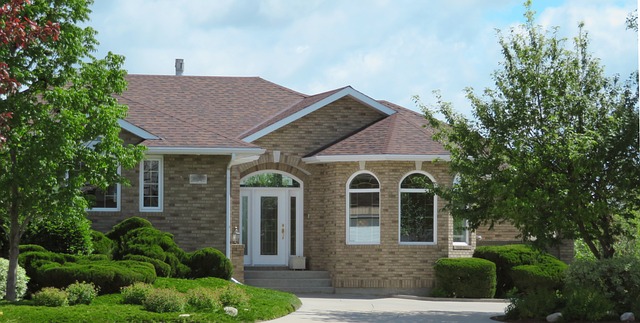Executive Condominiums (ECs) in Singapore, commonly referred to as Ec Sg, have emerged as a significant segment within the city-state's real estate market, appealing to both first-time homeowners and investors. The pricing of these units is influenced by a complex interplay of factors, including government policies like the Multi-Ministry Taskforce's cooling measures, demand-supply dynamics, economic health, and the transition of ECs from the open market to public housing after five years. Ec Sg offers relatively spacious options compared to smaller resale flats or condominiums, and their prices reflect both resilience and sensitivity to policy changes and economic shifts. Market trends indicate that historical pricing data for ECs in Singapore shows a pattern of price fluctuations due to economic factors, housing policies, and demand-supply considerations. The introduction of ECs as a hybrid housing solution has been pivotal in shaping this trend, offering an affordable alternative with diverse preferences catered to. Investors must conduct thorough analysis of past transactions, new project launches, and policy shifts to make informed decisions, as Ec Sg prices are particularly responsive to these factors. The Singapore government's regulatory tools like the ABSD and TDSR play a crucial role in maintaining market equilibrium and accessibility for middle-income families eligible for ECs, while the GLS program ensures a steady supply of land for development. The future trajectory of Ec Sg prices within the dynamic real estate sector is thus closely tied to these regulatory measures and broader economic indicators.
Executive Condominiums (ECs) in Singapore have emerged as a significant segment of the housing market, reflecting the evolving lifestyle and financial aspirations of residents. This article delves into the nuanced price trends of ECs in Singapore, offering a comprehensive analysis that spans historical price trajectories to future projections. We explore the multifaceted factors influencing these trends, compare EC prices with other housing types, and scrutinize the effects of government policies on EC pricing. Join us as we dissect the dynamics shaping EC Sg’s property landscape, enabling homebuyers and investors alike to make informed decisions in this vibrant market.
- Overview of EC Price Trends in Singapore: An Analysis of EC Sg Market Dynamics
- Historical Price Evolution: Tracking the Journey of EC Sg Prices Over the Years
- Factors Influencing EC Price Variations: Understanding the Drivers Behind the Trends
- Comparative Study: EC Sg vs. Other Housing Types in Singapore
- Emerging Patterns: Predicting Future Trends in EC Sg Prices
- Government Policies and Their Impact on Executive Condominium (EC) Pricing in Singapore
Overview of EC Price Trends in Singapore: An Analysis of EC Sg Market Dynamics

In recent years, Executive Condominiums (ECs) in Singapore have garnered significant attention from both first-time homeowners and property investors alike, with trends in EC prices reflecting the dynamic nature of the real estate market in Sg. The price trajectory of ECs has been influenced by various factors, including government policies, demand-supply dynamics, and broader economic conditions. Notably, the introduction of the Multi-Ministry Taskforce’s cooling measures in recent years has impacted the pricing of these properties, with some cooling effects observed in the market. Despite this, ECs Sg continue to be a popular housing option for those looking for larger living spaces relative to smaller resale flats or condominium units.
Analyzing the EC Sg market dynamics reveals a nuanced picture. Prices of these properties have shown both stability and volatility in response to policy changes, economic shifts, and evolving preferences among buyers. For instance, the transition of certain ECs from the open market to the public housing realm upon reaching their fifth anniversary has a bearing on investment strategies and resale values. Additionally, the location, amenities, and overall development quality of an EC can significantly influence its price point within the Sg market. Prospective buyers and investors should closely monitor these trends as they consider the EC Sg market, which is shaped by both short-term fluctuations and long-term structural shifts in the housing landscape.
Historical Price Evolution: Tracking the Journey of EC Sg Prices Over the Years

Over the years, the Executive Condominium (EC) Singapore prices have exhibited a dynamic trend that reflects the broader property market landscape in Singapore. Historical data indicates a trajectory of price fluctuations influenced by various economic factors, housing policies, and demand-supply dynamics. The introduction of ECs as a hybrid between public and private housing has been a significant factor in shaping this trend. Initially, EC prices were relatively affordable compared to private condominiums, attracting first-time homeowners and multi-generational families. As the years progressed, EC Sg prices responded to changes in the government’s housing policies, including the revisions of eligibility criteria and loan terms for buyers, which have influenced price points and purchasing behavior. The evolving preferences and financial capacities of potential homeowners have also played a role in the pricing journey of ECs in Singapore. Analyzing historical prices reveals a pattern of growth, with periods of steady appreciation punctuated by market corrections and shifts in policy, showcasing the adaptability and responsiveness of the EC market to economic signals and societal needs. Prospective buyers looking into EC Sg as an investment or a first home should consider these trends alongside current market conditions to make informed decisions about their property investments.
Factors Influencing EC Price Variations: Understanding the Drivers Behind the Trends

The Executive Condominiums (ECs) in Singapore are subject to price variations influenced by a confluence of factors. These trends reflect both market dynamics and government policies designed to balance housing supply and affordability. The pricing of ECs is affected by the location, age of the project, and the remaining lease. Proximity to amenities such as transportation hubs, schools, and shopping centers can command higher prices, as can newer developments with longer lease tenures. Additionally, the broader economic climate plays a significant role; economic growth and employment rates can impact buyers’ purchasing power, which in turn affects demand and pricing. The introduction of new EC sites through the Government Land Sales (GLS) program also impacts market supply and pricing. Moreover, the maturity of the estate and the collective sale cycle are pivotal; as an EC reaches its maximum lease years, its value may decline unless it undergoes redevelopment. Investor sentiment and confidence in the property market further influence prices, with sentiment often swayed by policy changes or economic forecasts. For potential buyers and investors, understanding these factors is crucial for interpreting EC price trends in Singapore’s dynamic real estate landscape, otherwise known as Ec Sg.
Comparative Study: EC Sg vs. Other Housing Types in Singapore

In a comparative study between Executive Condominiums (ECs) in Singapore, labeled “Ec Sg,” and other housing types within the city-state, it is evident that ECs present a unique value proposition for both first-time homeowners and upgraders. Ec Sg offers larger units at a relatively lower price point compared to private condominiums, while also providing more space than most HDB flats. This makes them an attractive option for families looking for a balance between affordability and space. The pricing trends of Ec Sg have shown a steady increase over the years, reflecting their status as a desirable intermediate housing option that bridges the gap between public and private housing. Notably, the resale prices of these units have risen notably, especially in mature estates, due to their location, amenities, and the appeal of living in established neighborhoods.
Furthermore, Ec Sg has been compared favorably with other housing types based on factors such as amenities, proximity to transportation nodes, and the availability of facilities. These condominiums often come with a wider array of recreational and communal facilities than standard HDB flats, and are typically located near MRT stations and shopping centers, which enhances their desirability. The study reveals that while private condominiums may offer more luxury and higher-end finishes, Ec Sg provides a comparable living experience at a fraction of the cost. This has led to an increasing number of Singaporeans considering Ec Sg as a viable and practical option for homeownership in a competitive real estate market.
Emerging Patterns: Predicting Future Trends in EC Sg Prices

In recent times, Executive Condominiums (ECs) in Singapore have been subject to a dynamic pricing landscape, with trends revealing insights into future market movements. Analysts and investors alike are closely monitoring the sales data and price adjustments of ECs Sg, as these patterns often provide a clearer picture of the property market’s trajectory. Factors such as population growth, mortgage rates, and government policies play pivotal roles in shaping the demand-supply dynamics that influence EC Sg prices. For instance, changes in housing grants or loan eligibility criteria can have immediate effects on the affordability and desirability of these properties.
To accurately predict future trends in EC Sg prices, one must consider the historical performance of similar developments and the current economic climate. Market sentiment, influenced by broader economic indicators such as GDP growth and unemployment rates, also plays a critical role. Additionally, the location, amenities, and unique selling points of new EC projects are key determinants of their potential market reception. By analyzing past transactions, assessing new project launches, and keeping abreast of policy changes, investors can gain a comprehensive understanding of the direction in which EC Sg prices may head. This due diligence is essential for making informed decisions in the property market, especially given the rapid pace at which real estate trends evolve.
Government Policies and Their Impact on Executive Condominium (EC) Pricing in Singapore

In Singapore, the pricing trends for Executive Condominiums (ECs) are significantly influenced by government policies that govern housing and property development. These policies are designed to ensure a balanced and sustainable property market, catering to various segments of the population including middle-income families who are eligible for ECs. One pivotal aspect is the allocation of land through the Government Land Sales (GLS) program, which provides a predictable pipeline of new housing supply. The Singapore government’s strategic releases of land for EC development, as seen in areas like Sengkang and Tampines, have been instrumental in shaping the EC market landscape, influencing pricing through supply dynamics. Additionally, measures such as the Additional Buyer’s Stamp Duty (ABSD) and Total Debt Servicing Ratio (TDSR) frameworks serve to regulate ownership and prevent overheating in the property market, thereby affecting demand and, consequently, EC pricing in Singapore, known as Ec Sg. These policies are not static; they evolve in response to economic conditions, ensuring that EC prices remain accessible for their intended demographic while maintaining market stability. The interplay between these regulatory measures and the market’s response is a critical factor influencing the trajectory of EC prices in Singapore’s vibrant property sector.
Singapore’s property market, particularly the Executive Condominium (EC Sg) segment, exhibits a dynamic and nuanced trend that is influenced by a variety of factors including economic conditions, supply and demand dynamics, and governmental policies. The analysis of historical price evolution and the comparative study against other housing types in Singapore reveal that EC Sg properties offer an attractive middle-ground option for aspiring homeowners. As observed from the data, prices have seen fluctuations over the years, but a clear understanding of these drivers can help both investors and potential residents make informed decisions. The emergent patterns suggest a continuation of this volatility, with future pricing trends potentially impacted by ongoing policy changes and market forces. It is clear that the EC Sg market in Singapore will remain an area of significant interest, necessitating continuous monitoring to navigate its complexities effectively.
